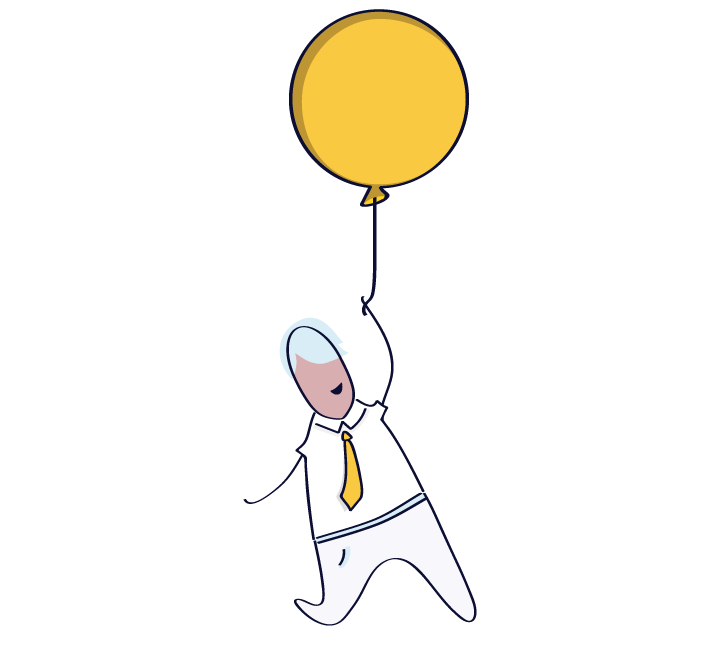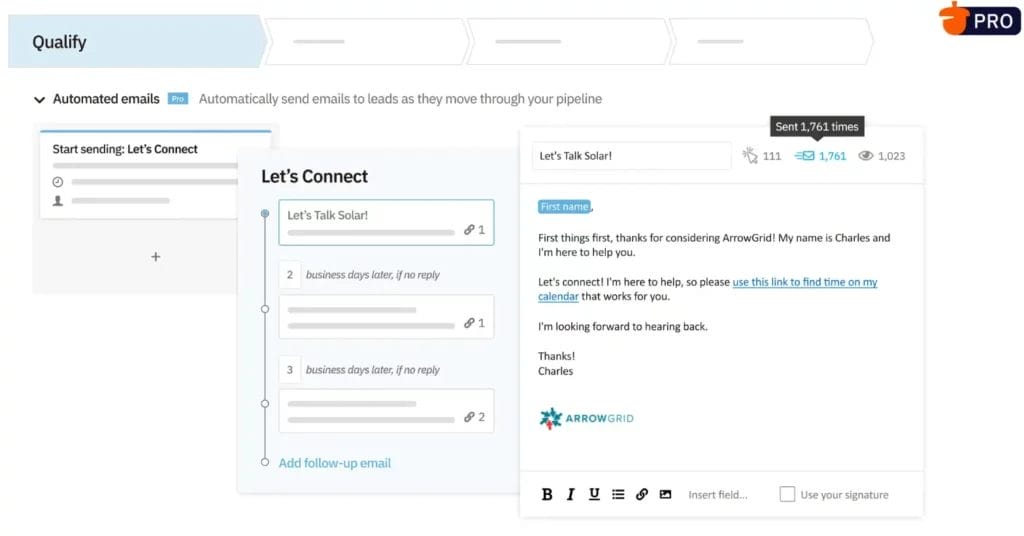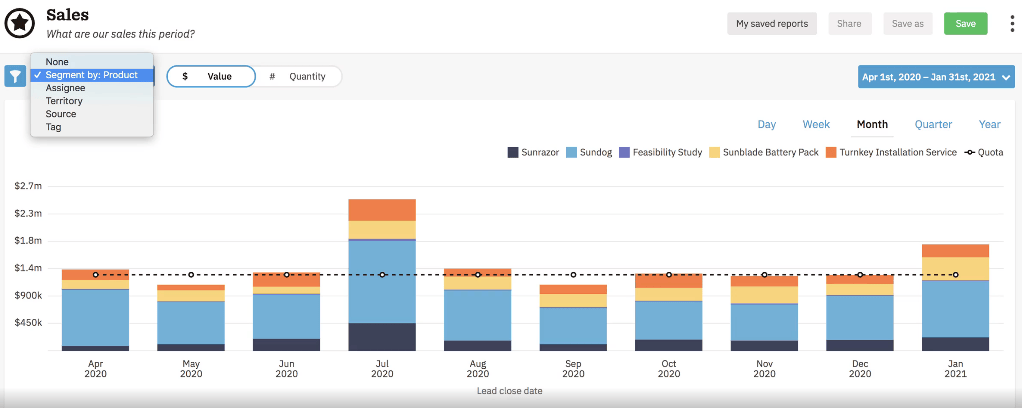
new leads |
Consulting firms need a great sales pipeline to attract leads and close deals, as well as generate recurring revenue from clients and referrals.
Read on to learn tips and best practices for managing an optimized sales pipeline for consulting firms.
Consulting firms need a strong marketing and sales engine to generate leads and close clients without causing imbalances and bottlenecks.
An imbalance in the sales pipeline can be a problem for consultants and consulting firms, with too much focus on closing clients over generating new ones or delivering billable hours over attracting new leads.
A well-managed pipeline means you’ll have a steady and manageable stream of incoming clients and the time and resources to nurture existing clients.
The typical sales process for consulting companies is similar to that of other industries. You’ll have a lead generation and prospecting process to attract new clients, followed by qualifying, pitching, negotiating, and closing.

We’ve compiled 6 best practices to ensure your consulting sales pipeline is well-managed and enhances your sales process.
Creating a sales pipeline that matches your sales and revenue goals is important. When you start from your goals, you have a guiding star to inform every step of your sales process. With these goals in mind, you can begin to build your sales pipeline.
Some questions you can ask to create a sales pipeline that works for your consulting firm include:
When you’ve got a basic sales process, it’s a good idea to standardize the sales pipeline. It helps you to develop consistent workflows tailored to your consulting services.
Additionally, it reduces the resources needed for onboarding new team members since your standardized pipeline will help them adapt to your company’s expectations, timeline, and goals.
Some tasks in your pipeline can be achieved quickly through automation.
For example, Nutshell CRM allows you to customize your sales pipelines to automate sales admin tasks, such as advancing leads through the pipeline and sending email drip sequences.

This takes the busywork off the plate of your sales team and lets them focus on big-picture, human-driven tasks, such as building relationships with your potential clients.
You can boost your sales performance with regular, scheduled reviews of your sales pipeline. Regular observation helps you make continuous data-backed improvements, ultimately benefiting your bottom line.
You can closely monitor key metrics such as the average time to close, the average cost of client acquisition, and the rate of incoming sales-qualified leads (SQLs) to make decisions on improving your sales pipeline.

Since consulting firms often generate a low number of clients, you can tip the odds in your favor to generate referrals by maintaining your existing customer relationships.
Follow up consistently with clients using automated reminders and follow-up protocols in your sales pipeline.
While you can tackle all these practices manually, a good CRM will help you accomplish everything you need to create and maintain a well-managed sales pipeline for your consulting business.
Choosing the right CRM is critical to getting efficiency out of your sales pipeline. Nutshell CRM comes with robust features at an affordable price to help you make more sales for your consulting firm. Learn more about how we help professional services companies, like consulting services, achieve their sales goals with stress-free sales and marketing automation.
Try Nutshell for your consulting business for free, with no obligation, for 14 days. Or contact us today to learn more about Nutshell contact and pipeline management software.
Most consulting firms benefit from 7-11 pipeline stages. A typical structure includes: New Lead, Contacting, Qualified, Appointment Scheduled, Proposal Sent, Negotiation, and Won. Add stages like “Long-Term Nurture” for deals with extended timelines. The key is matching stages to your actual sales process.
The average consulting sales cycle is 103 days total: 17 days for initial contact, 32 days for proposal development, 28 days for negotiation, and 26 days for closing. Larger deals and enterprise clients typically take longer, while smaller engagements may close in 60-75 days.
Track these essential metrics: win rate (percentage of deals closed), average deal size, sales cycle length, pipeline velocity (how fast deals move through stages), conversion rates by stage, and number of qualified leads per month. These metrics help identify bottlenecks and forecast revenue accurately.
Prevent stalled deals by establishing clear next steps with prospects, setting mutual deadlines, and maintaining consistent follow-up. Requalify opportunities regularly by confirming budget, decision-makers, and timeline. Use your CRM’s automation to trigger reminders and keep conversations moving forward without manual tracking.
A sales pipeline tracks active opportunities and their progression through your sales stages. A sales funnel measures conversion rates and how many leads drop off at each stage. Think of the pipeline as “what deals you’re working” and the funnel as “how well you’re converting.”
Attend a live guided tour!

Join 30,000+ other sales and marketing professionals. Subscribe to our Sell to Win newsletter!
